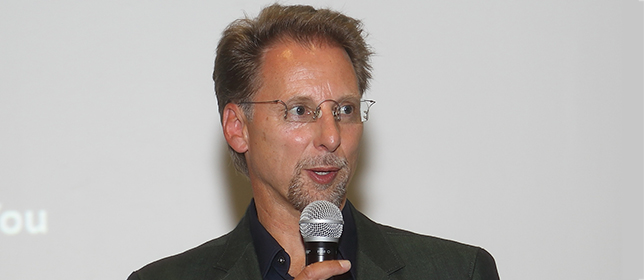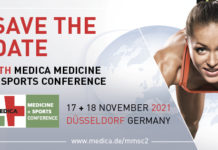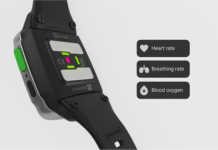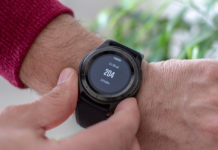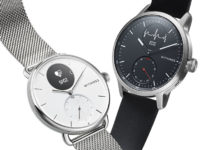[quote author=”Harry Strasser” firm=”Wearable Technologies Group”]”We envision a connected world, in which everything in people’s life will have computing power, wireless connectivity, and a lot of sensors. Wearable technologies will empower people to have a healthier and more connected life style.” [/quote]
The second Wearable Technologies Conference in San Francisco happening at the same time as the America’s Cup – was fully booked and a huge success. Not only because of the great turnout, but especially because speakers and attendees, ranging from Flextronics and Samsung to start-ups like Wearable Experiments, Project Holodeck, or Amiigo were inspiring and fun to watch.
Integrating entrepreneurial demands with innovative, cutting-edge technologies, the Wearable Technologies Conference in San Francisco was able to bring together the entire value chain. The first day focused on was all about Smarter Living, Internet of Things, Smart Internationalization, and Wearable Technologies for a better World.
Harry Strasser, Wearable Technologies Group, opened the conference with an inspiring keynote on the question that was the thin red line of this conference: Will wearable technologies finally cross the chasm? He also talked about the convergence of cloud computing, wearable computing and the internet of things.
Following this, was John Dwyer of the main sponsor Flextronics. John started his keynote with a video case study about the ICEdot crash sensor and how the Wearable Technologies Group helped establishing this partnership. He then outlined how Flextronics can partner with companies of all sizes to build the future wearable products.
Robin Duke-Woolley and Jon Howes from Beecham Research then presented the new Wearable Technologies report, which was created in collaboration with the Wearable Technologies Group.
The Smarter Living on a Smarter Planet session dealt with how we can use technologies to help us and our planet, and featured sponsors of the WT Innovation World Cup. Volker Prüller, Texas Instruments claimed for example, that higher energy conservation awareness as well as legislation drives the creation of new standards like SEP2.0 and Econnect and showed the TI SensorTag, an SDK available to contestants of the WT Innovation World Cup.
Andrew Leone from STMicroelectronics explained how MEMS Sensors make technologies more human by sensing hearing, orientation, pressure, temperature, humidity and touch, and said, key enabler of their new Sensor iNEMO were sensors, microprocessors, and RF (radio frequency). Next on the podium was Dr. Chich-Cheng Lu, AiQ, who talked about biofeedback applications in smart textiles. He also presented on his future goals, including a shirt that calculates blood pressure, skin temperature, gait analysis, blood flow information, heart rate, etc., and has washable materials.
Last but not least in this session, Philipp Miehlich (VARTA Microbattery) presented on the new definition of batteries. He emphasized how batteries are no longer only commodities and that an excellent battery life cycle should have >80% use after 2500 recharge cycles.
Next was the subject of Machine to Machine and Internet of Things. Brian Gally, Qualcomm MEMS Technologies, seamlessly built the bridge to the first session with his description about how consumer expectations are changing rapidly (and how the average consumer checks his smartphone every 6.6 Minutes) and the barrier to innovation is battery power. Telit’s Michael Wagner then talked about the importance of antennas for the creation of connected machine-to-machine technologies and the two levels of certification these require, and Richard Dym, SIIA, pointed out which consequences, and chaos, would ensue if we wouldn’t have a cloud. The session ended with a panel on “Cloud as the New Enabler”, featuring the speakers of this session and moderated by Robin Duke-Woolley (Beecham Research).
In the Wearable Technologies for a Better World session new solutions helping both, patients and doctors, were showcased. Nikhil George, Mobisante, presented their portable ultrasound device. Not only can this device be used in remote locations or third world countries, they are being used in huge hospitals in the US already, for example the hospital in Huntsville, AL. The Stanford University was represented by Manu Prakash who presented on how cost as a constraint can be the inspiration for new ideas. Björn Weigel from Bioservo Technologies sees the market for medical DIY type of appliances expanding, as entrants and newer solutions emerge and showcased the Bioservo glove helping people with a weak grip.
The day concluded with a panel, in which Lucie Merkle (Invest in Bavaria), Oliver Bolthausen (BridgehouseLaw), Jörg Kemkes (BridgehouseTax), and Christian Stammel (Wearable Technologies Group) discussed Smart Internationalization Strategies for Smart Technologies.
After a long and inspiring day all participants were invited to get together at the Fort Mason Center. Many interesting people from different sectors of the industry attended, and the Wearable Technologies Group is keen to see all the great new projects and products initiated during this networking session. Recap day two to come tomorrow – check it out.












